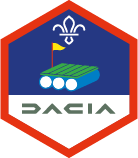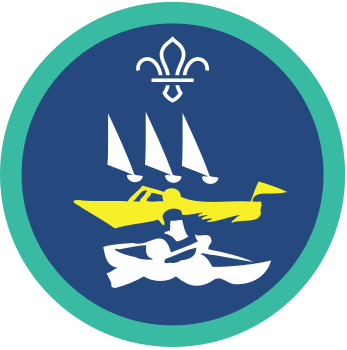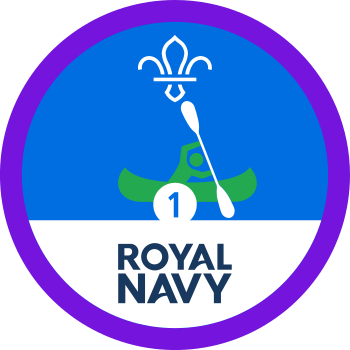Narrow boating
What to expect
Narrowboats are long, slim boats designed to travel on the huge networks of canals and rivers in the UK. They were crucial to transport goods and people before the use of modern trains and cars. Original narrowboats were made from wood and pulled by horses walking on the towpaths along the edges of the canals.
Modern narrowboats are usually made from steel and are often ornately decorated. They’re used for holidays, touring or even to live in. They’re usually steered from the back using a tiller to control the rudder. Diesel engines are used to power them and they cruise along at around 3mph. Narrowboating is a great way to try something new and get to know your crewmates better by spending time together.
What you’ll learn
Narrowboats may be narrow, but they’re often very long and have to be steered down skinny waterways. Your crew will have to be well-coordinated to adjust the steering and throttle to navigate these, and this could prepare you well for other team activities. You’ll also learn the value of patience, as most narrowboats are pretty slow!
Fun facts
In the UK, there are more than 15,000 ‘liveaboards’. These are people who live permanently on board a narrowboat, and they can often be seen moored in harbours and docks, or chugging up and down the canals and waterways. Imagine doing your daily run to school, work or to the shops on a narrowboat. Maybe you already do!
Handy hints
- Get a grip. A pair of strong, sturdy shoes will be a huge help when jumping on and off the boat to navigate lochs or moor up at the bank.
- Pack light. Unsurprisingly, there’s not a lot of space on a narrow boat. Packing light and only taking what you need, especially if staying overnight, can help avoid clutter.
Safety
You must always:
- Complete a risk assessment
- Have the right ratios of number of adults to provide suitable supervision
- Set up an InTouch process
- Know what to do in an emergency
- Share information with parents and carers with an activity information form
- Get approval from your commissioner
Be safe outdoors:
- Check the weather forecast
Be safe in water:
Everyone should be able to swim 50 m wearing the clothing or equipment for the activity. Non-swimmers will need additional support.
Water can be dangerous - be aware of the risks.
The category of water depends on how safe the water is. Use our waterways directory to check.
Be sure to manage the group when near water, keeping everyone safe.
Make sure that all equipment is fit for purpose and in good condition:
Everyone must wear a life jacket or buoyancy aid.
The instructor must make sure boats are seaworthy.
There are regulations you must follow if you are hiring a boat.
Joint activities with other organisations:
- This activity can be run jointly with Girlguiding.
- This activity can be run with other organisations.
This activity can be led by you or someone else in Scouts:
The activity leader must have an adventurous activities permit with the right level and permissions for your group.
Where the group is entirely members over the age of 18 the permit scheme does not apply, please follow the rule 9.8 adult groups.
You can go to a centre or use an activity leader who is not part of Scouting:
You must find a suitable provider who meets the following requirements:- The centre/instructor should hold one of these:
- Royal Yachting Association - Helmsman - for inland waters
- National Community Boat Association - Certificate in Community Boat Management
The provider must have public liability insurance.
Guidance
Reflection
Narrow boating is a great way to spend quality time with your crew and give something new a try. Narrow boats, by design, can be quite cramped and require everyone to spend time very close to each other. What can you do to make this easier and be respectful of those around you to make sure you have the best experience? Are these skills that we can transfer to other activities?
Being respectful of those around us and thinking about how we can work well together isn’t just important in narrow boating, but can also be applied to our daily lives to help us work and get along better with everyone we meet.
- Narrowboating can often be adapted so more people can give it a go. Many outdoor centres have facilities that cater for people with additional needs and experienced instructors to help everyone achieve their goals. Get in touch with your local provider to chat through the needs of people in your group – make sure you give them plenty of notice.
- Narrowboats can be adapted in different ways to suit different accessibility needs. There are specialised accessible narrowboat tours, as well as adapted narrowboats for hire. Further information and details of accessible narrowboat tours and hire can be found here.
All Scout activities should be inclusive and accessible.
Anyone who enjoyed narrow boating could put their leadership and team-work skills to the test and give power boating a go, or head out on a multi-day yachting adventure.



